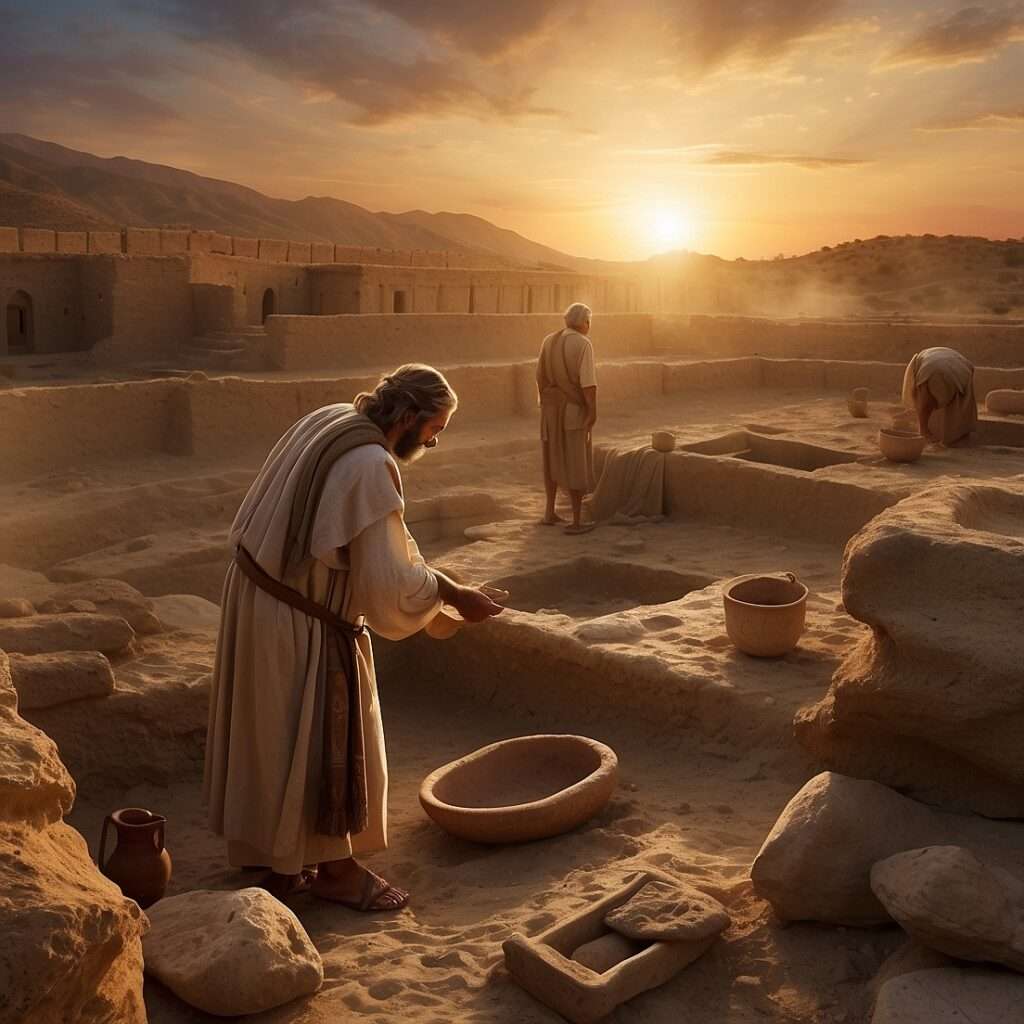
"Depiction of men uncovering artifacts during an archaeological dig in ancient Judea, symbolizing the historical setting of Jesus’s life."
Who was Jesus of Nazareth? The question of His existence is one of history’s most debated topics. While some dismiss Him as a legend, the historical evidence of Jesus suggests otherwise. From ancient writings to archaeological discoveries, multiple sources confirm the undeniable reality of His life. In this article, we explore compelling evidence from Christian and non-Christian sources, shedding light on Jesus’s impact on history.
This article aims to settle that debate by exploring the historical evidence of Jesus, drawing upon ancient texts, both Christian and non-Christian, as well as archaeological discoveries that ground His life in verifiable reality. What emerges from this examination is a compelling case for the existence of Jesus—not as a figure of legend, but as a historical figure whose life reshaped the world.
Historical Evidence of Jesus in Ancient Writings
Remarkably, the existence of Jesus is documented not only by Christian writers but also by non-Christian historians from the first and second centuries. These accounts provide invaluable external validation of Jesus’s life and the early Christian movement.
Josephus: Historical Evidence from a Jewish Historian
Flavius Josephus, a first-century Jewish historian, offers one of the earliest non-Christian references to Jesus. In Antiquities of the Jews, Josephus describes Jesus as a wise teacher, a doer of “wonderful works,” and a man who was crucified under Pontius Pilate.
Though the authenticity of some phrases in Josephus’s text is debated, scholars agree that his account confirms several key elements of the Gospel narratives: Jesus’s role as a teacher, His execution by Roman authorities, and His following among both Jews and Gentiles. Josephus’s testimony is particularly significant because he wrote as an outsider—neither a Christian nor an advocate of Jesus. His account aligns with John 19:16-18, where the crucifixion under Pilate is vividly described, offering critical historical corroboration.
Tacitus: Roman Historian Validating Jesus’s Crucifixion
Cornelius Tacitus, one of Rome’s greatest historians, provides additional evidence of Jesus in his Annals. Writing about the persecution of Christians under Emperor Nero, Tacitus mentions “Christus,” who was executed under Pontius Pilate during Tiberius’s reign. Tacitus’s disdain for Christians as a “detestable superstition” highlights his objectivity and disinterest in promoting their cause, making his account a reliable non-Christian source.
This reference not only confirms the crucifixion but also indicates the rapid growth of Christianity within decades of Jesus’s death, mirroring the Gospel account in Mark 15:15, where Pilate consents to Jesus’s execution under public pressure.
Pliny the Younger: Early Christian Worship of Jesus
Pliny the Younger, a Roman governor, sheds light on the early Christian community’s devotion to Jesus. In a letter to Emperor Trajan, Pliny describes Christians gathering before dawn to sing hymns to Christ “as to a god.” This indirect evidence not only underscores Jesus’s historical existence but also reflects the profound impact He had on His followers, who worshiped Him even at great personal risk.
The Gospels as Historical Evidence of Jesus
While often dismissed as religious texts, the Gospels of Matthew, Mark, Luke, and John are invaluable historical records. Written within decades of Jesus’s life, they provide detailed accounts of His ministry, teachings, and pivotal events.
Eyewitness Accounts and Gospel Reliability
The Gospels are rooted in eyewitness accounts and oral traditions from those who knew Jesus personally. Mark, believed to be the earliest Gospel, offers a straightforward narrative, while Luke’s prologue (Luke 1:1-4) explicitly states his commitment to historical accuracy through careful research and interviews with witnesses.
Consistency in Key Gospel Events
Despite being authored by different individuals in different regions, the Gospels demonstrate remarkable consistency in key events: Jesus’s baptism by John, His miracles, His teachings, and His crucifixion and resurrection. Such coherence suggests a shared historical basis rather than a purely mythological construct.
Non-Christian Sources Corroborating Jesus’s Life
Beyond Josephus and Tacitus, other non-Christian sources affirm the reality of Jesus’s life and the movement He inspired.

Suetonius: Roman Records of “Chrestus”
In The Twelve Caesars, the Roman historian Suetonius mentions disturbances in Rome caused by followers of “Chrestus.” While scholars debate the exact reference, many believe “Chrestus” is a misspelling of Christ, indicating that Jesus’s influence extended even to the heart of the Roman Empire.
Babylonian Talmud: Evidence from Jewish Texts
The Babylonian Talmud, a central text of Rabbinic Judaism, refers to Jesus in the context of His execution during Passover. Although the references are critical and polemical, they confirm that Jesus was a known figure whose actions and death were significant enough to be recorded by Jewish authorities.
Archaeological Evidence Supporting the Gospels
Archaeology offers tangible evidence that corroborates the Gospel accounts, grounding the story of Jesus in real locations and historical contexts.
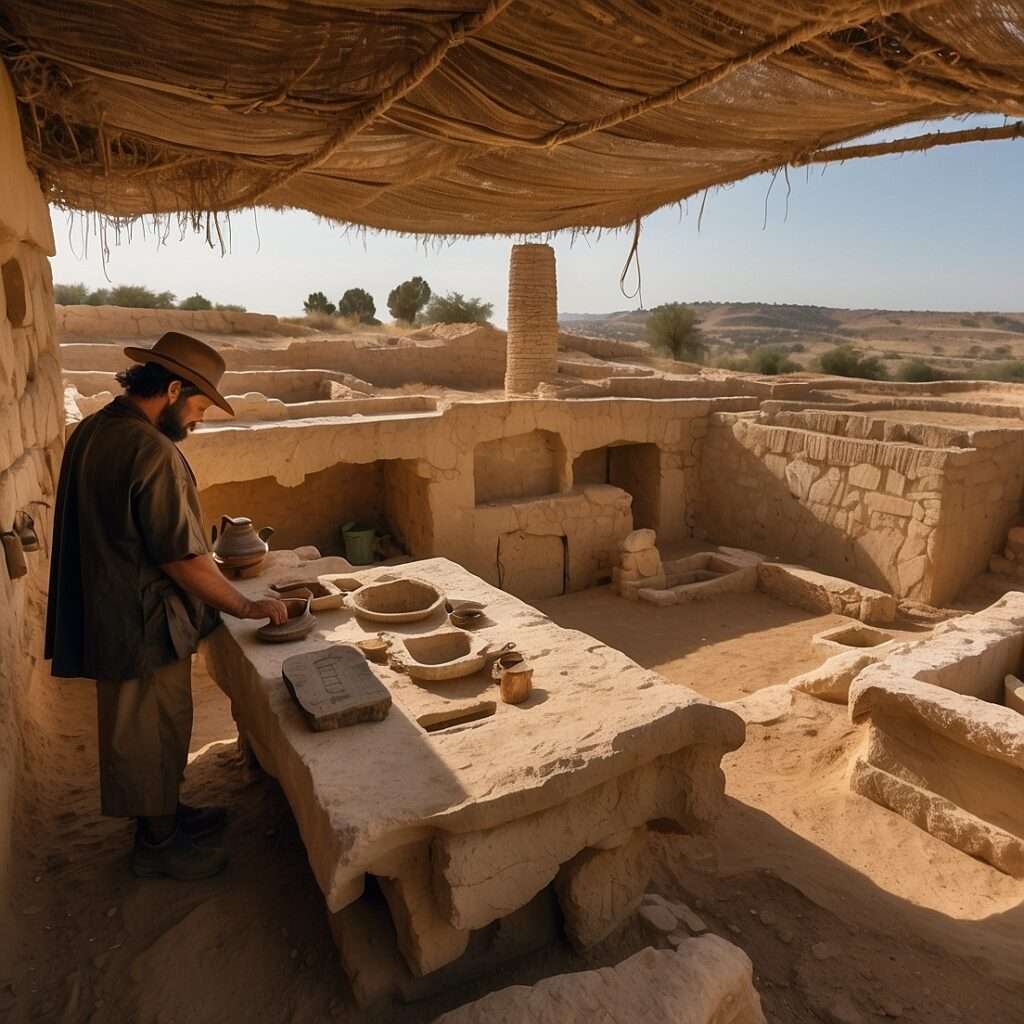
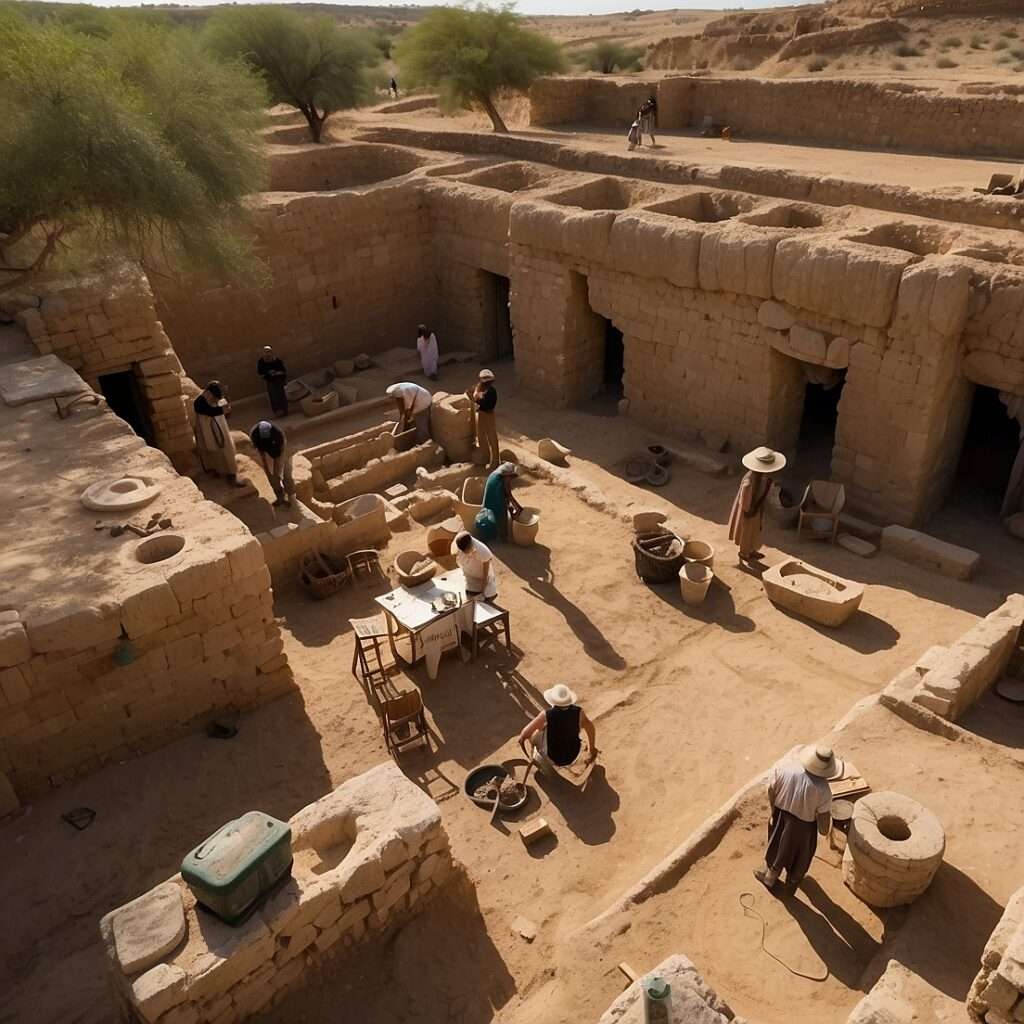
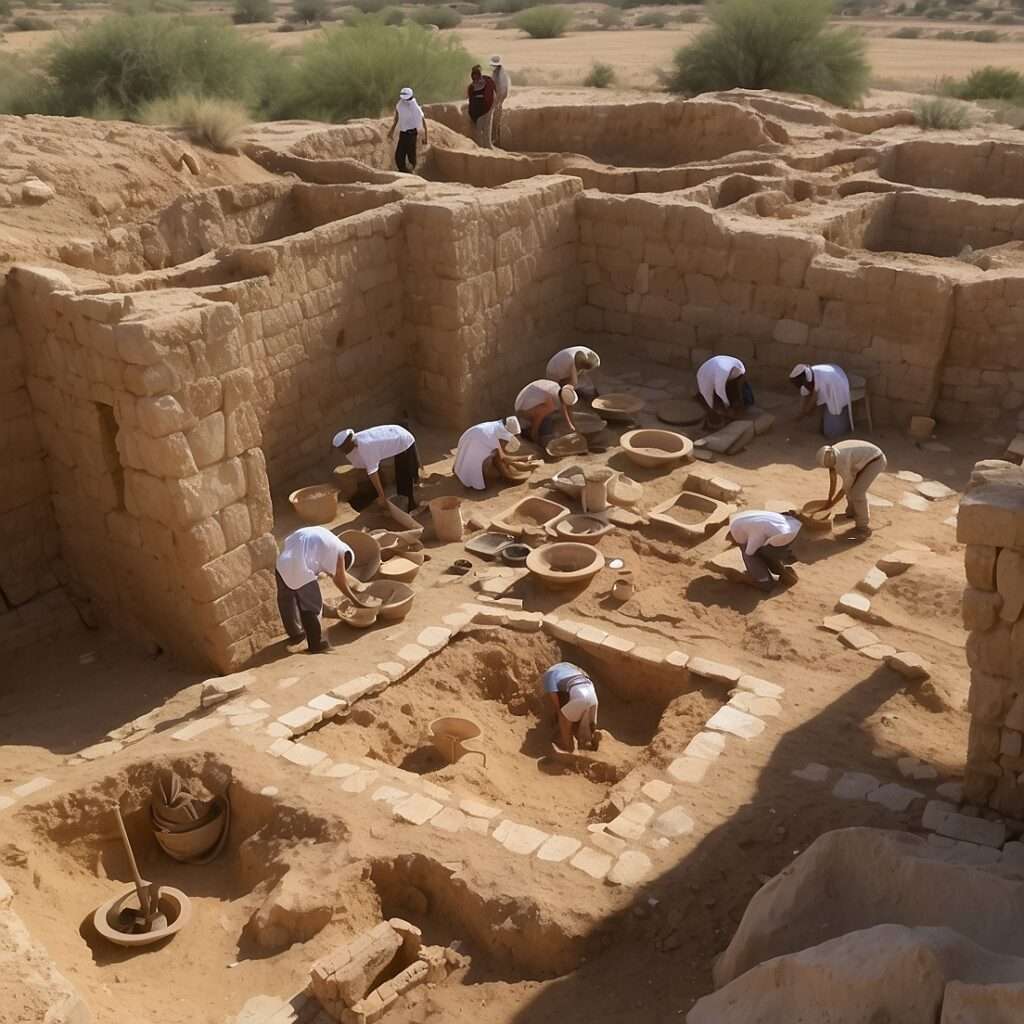
Pontius Pilate Inscription
In 1961, an inscription was discovered in Caesarea Maritima bearing the name “Pontius Pilate, Prefect of Judea.” This discovery confirms the historical existence of Pilate, the Roman governor central to the trial and crucifixion of Jesus as described in all four Gospels.
Nazareth and Capernaum
Excavations in Nazareth, Jesus’s hometown, have uncovered first-century structures consistent with the modest setting described in the Gospels. Similarly, archaeological findings in Capernaum, where Jesus conducted much of His ministry, provide a vivid backdrop to His teachings and miracles. These sites anchor Jesus’s story in the physical world, making it harder to dismiss as mere legend.
The Impact of Jesus on History
The evidence for Jesus’s existence extends beyond historical texts and artifacts—it is etched into the fabric of human history.
Early Christian Writings
The letters of Paul, written within decades of Jesus’s death, are some of the earliest Christian documents. Paul’s writings, such as 1 Corinthians 15:3-4, affirm key Gospel events: Jesus’s death, burial, and resurrection. These letters also demonstrate the rapid spread of Jesus’s teachings across the Roman world.
Transformation of Society
Within a few centuries, Christianity grew from a marginalized Jewish sect to the dominant religion of the Roman Empire. This remarkable transformation—achieved despite intense persecution—testifies to the profound impact of Jesus’s life and message. His teachings reshaped ethics, law, and philosophy, leaving an indelible mark on Western civilization.
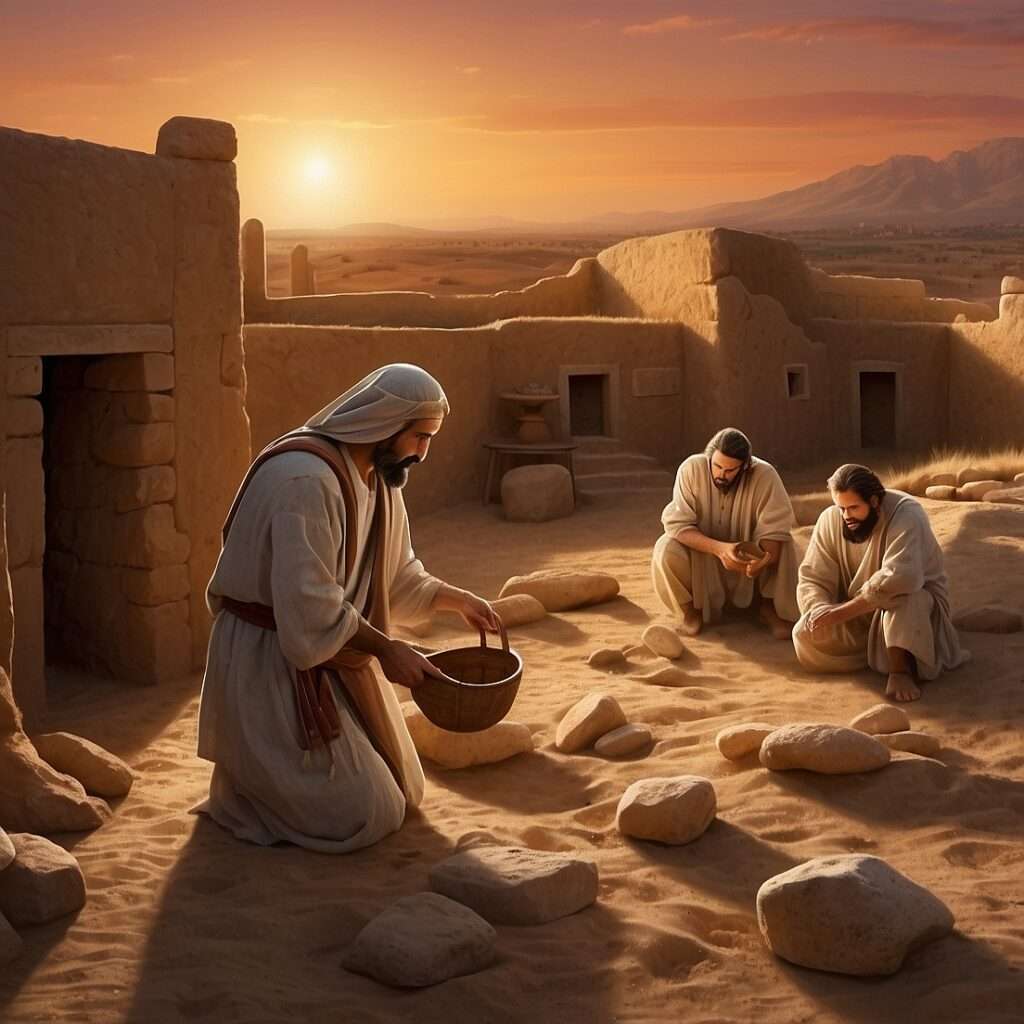
Conclusion: The Undeniable Historical Reality of Jesus
The case for Jesus as a historical figure is robust and multi-dimensional. Ancient historians like Josephus, Tacitus, and Pliny the Younger provide external validation. The Gospels, supported by archaeological findings, offer detailed narratives grounded in reality. Together, these sources paint a consistent and compelling picture: Jesus of Nazareth was not a myth but a man whose life and teachings forever changed the world.
Whether approached through faith or historical inquiry, the evidence for Jesus’s existence is overwhelming. His legacy endures, a testament to the undeniable reality of His life and influence.
Call to Action
If you are intrigued by the historical evidence for Jesus and wish to explore further, consider reading our related article on Who Was Jesus? Liar, Lunatic, or Lord? to gain a deeper understanding of His identity and significance.
External Sources:
- Josephus’s Writings:
- Antiquities of the Jews by Flavius Josephus provides a non-Christian perspective on Jesus’s existence.
- Tacitus’s Annals:
- The Roman historian Tacitus mentions “Christus” in his Annals.
- Babylonian Talmud References:
- The Jewish Virtual Library discusses mentions of Jesus in the Talmud.
Internal Links:
- Prophecies Fulfilled by Jesus:
- Explore how Old Testament prophecies were fulfilled by Jesus in this article:
- Who Was Jesus? Liar, Lunatic, or Lord?:
- Delve into the debate about Jesus’s identity in this insightful piece:
- The Historical Reality of Jesus: Unveiling the Evidence:
- A comprehensive examination of the historical evidence for Jesus:
Example Q&A Section
Q1: What historical evidence proves Jesus existed?
A: Historical evidence for Jesus includes writings by Jewish historian Josephus (Antiquities of the Jews), Roman historian Tacitus (Annals), and references in the Babylonian Talmud. These non-Christian sources corroborate key details about Jesus’s life, including His crucifixion under Pontius Pilate.
Q2: Did non-Christian sources write about Jesus?
A: Yes, non-Christian sources such as Josephus, Tacitus, and Pliny the Younger wrote about Jesus. These accounts provide external validation of His life and the early Christian movement.
Q3: How reliable are the Gospels as historical documents?
A: The Gospels are widely regarded as valuable historical documents. Written within decades of Jesus’s life, they are based on eyewitness testimonies and provide consistent accounts of His ministry, teachings, and crucifixion.
Q4: What does Josephus say about Jesus?
A: Josephus describes Jesus as a wise teacher who was crucified under Pontius Pilate. This account, though debated in parts, aligns with Gospel narratives and provides early non-Christian evidence of Jesus’s existence.
Q5: Has archaeology confirmed the life of Jesus?
A: Archaeological findings, such as the Pontius Pilate inscription and excavations in Nazareth and Capernaum, confirm the historical context of Jesus’s life as described in the Gospels.
Q6: What does the Pontius Pilate inscription tell us about Jesus?
A: Discovered in Caesarea Maritima, the Pontius Pilate inscription confirms the existence of Pilate, the Roman governor who ordered Jesus’s crucifixion, as mentioned in all four Gospels.
Q7: What does the Babylonian Talmud say about Jesus?
A: The Babylonian Talmud references Jesus in the context of His execution during Passover. Though critical of Jesus, this Jewish text acknowledges His existence and influence.


